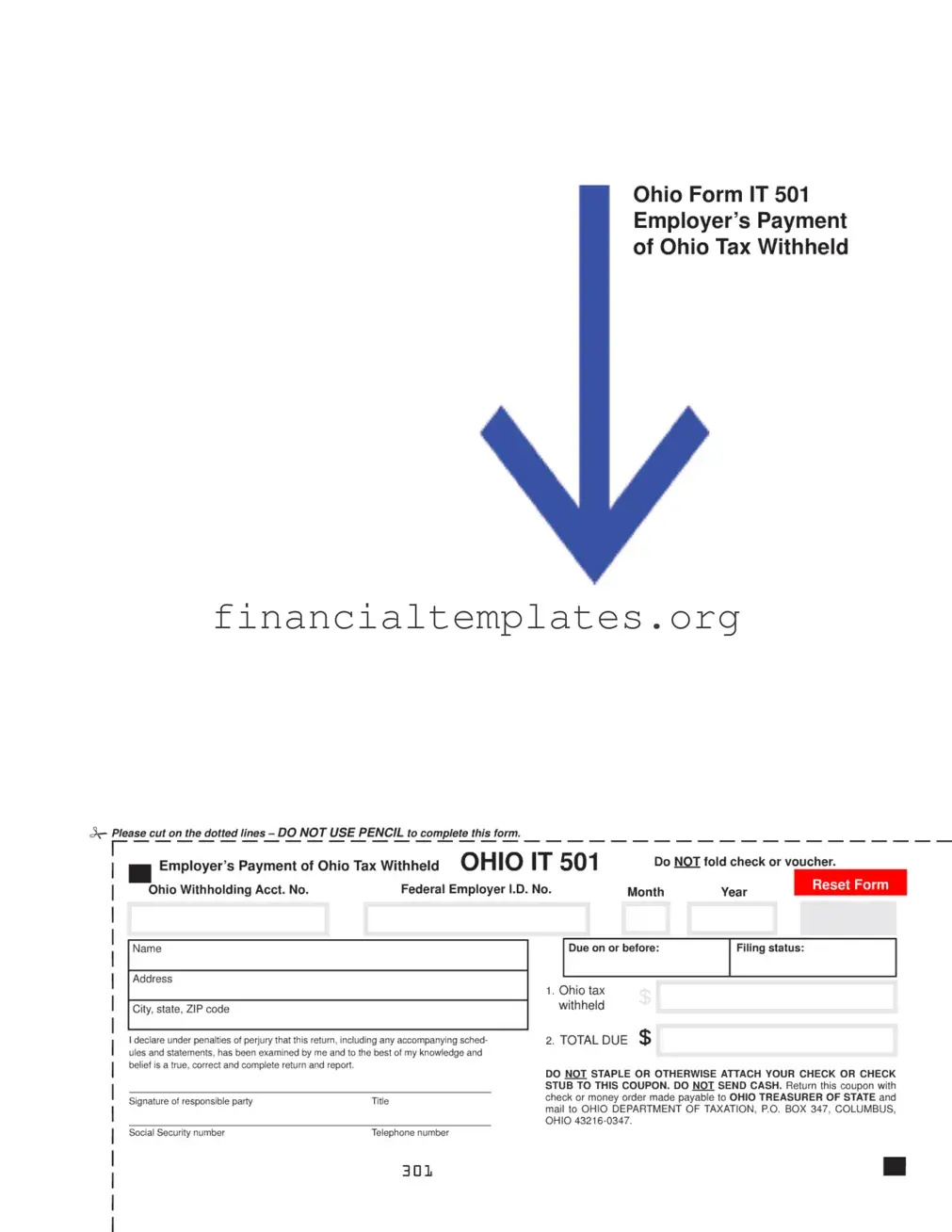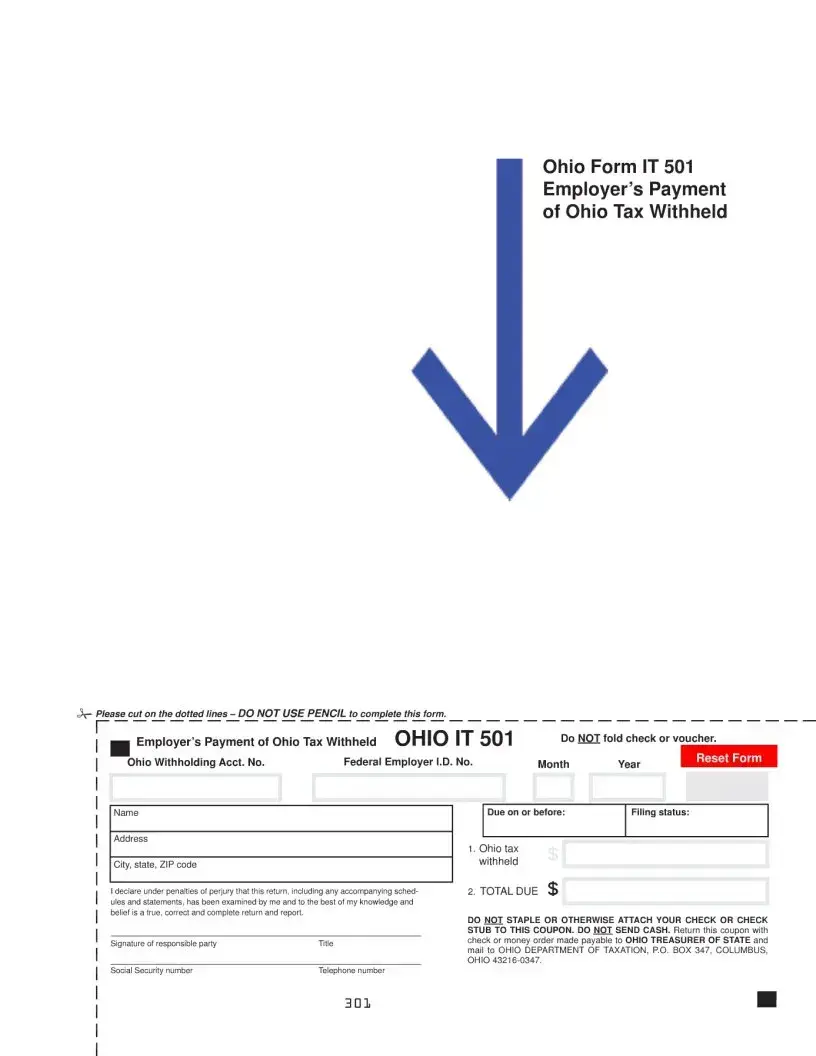The IRS Form 941, Employer’s Quarterly Federal Tax Return, is quite similar to the Ohio IT 501 form because both are essential for reporting taxes withheld from employees’ paychecks. While the IT 501 form deals with state tax withholdings in Ohio, Form 941 handles the federal aspect, including income, Social Security, and Medicare taxes. Both forms are critical for employers' compliance with tax withholding requirements and are submitted at regular intervals throughout the fiscal year.
Form W-2, Wage and Tax Statement, shares a close similarity with the IT 501 form as well. This document is given to employees and the Social Security Administration, detailing the income earned and taxes withheld over the past year. Like the IT 501, the purpose of the W-2 is to report taxes withheld, although the W-2 serves more as an annual summary for employees rather than a payment form for employers.
The Form W-3, Transmittal of Wage and Tax Statements, complements the W-2 forms, akin to how the IT 501 functions. Employers use Form W-3 to submit all W-2 forms for their employees to the Social Security Administration. It serves as a summary form, similar to IT 501’s role in reporting total state tax withheld before sending the cumulative payment to the state treasury.
Form 940, Employer's Annual Federal Unemployment (FUTA) Tax Return, parallels the IT 501 with its focus on employer taxation. While Form 940 reports annual federal unemployment taxes, IT 501 is for state tax withholdings. Both are integral for employers to fulfill their tax obligations, just directed toward different governmental departments.
The Form 1099-MISC, Miscellaneous Income, also shares similarities with the IT 501 in its role in reporting certain types of payments. Although 1099-MISC is used primarily to report payments to non-employees, it emphasizes the importance of documenting and remitting taxes, aligning with the IT 501’s objective of tracking tax withholdings.
Form 1096, Annual Summary and Transmittal of U.S. Information Returns, is another document closely related to the IT 501. Employers use Form 1096 to summarize and send information returns like the 1099-MISC to the IRS. It serves a summary function similar to the IT 501, which aggregates state tax withholdings for Ohio before submission.
The Schedule B (Form 941), Report of Tax Liability for Semiweekly Schedule Depositors, echoes the periodic reporting nature of the IT 501. Schedule B breaks down an employer's tax liability further, catering to businesses with more complex tax withholding and deposit schedules, aligning with the IT 501's goal of ensuring timely and accurate tax remittance.
Form 945, Annual Return of Withheld Federal Income Tax, parallels the IT 501 by focusing on nonpayroll items. While the IT 501 form addresses taxes withheld from employees' wages, Form 945 covers withheld federal income tax on non-employee payments, highlighting the breadth of tax withholding and payment responsibilities for various incomes.
Form 944, Employer’s Annual Federal Tax Return, is designed for smaller employers to report federal tax withholdings annually, comparable to the IT 501's state-level counterpart. This form simplifies the tax reporting process, mirroring the IT 501’s aim of collecting tax withholdings for state taxation purposes.
The Ohio IT 4, Employee’s Withholding Exemption Certificate, although not a payment form, prefaces the relationship that culminates in the IT 501. Employees complete the IT 4 to determine state tax withholding levels, directly influencing the totals reported and paid via the IT 501. This connection highlights the interdependent nature of tax documentation and processing from exemption to payment.

